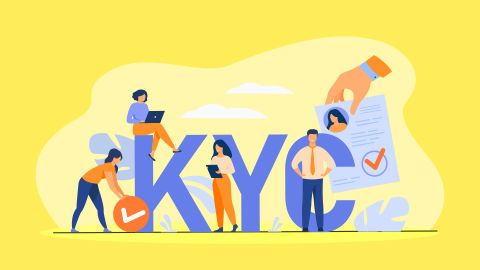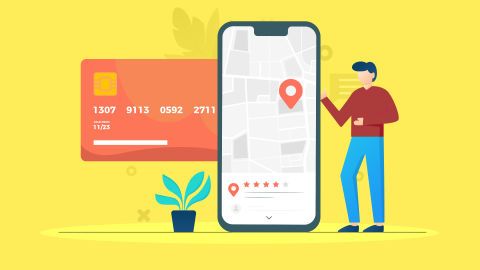This article will provide a detailed comparison of iPhone 14 and iPhone 15, highlighting their features, specifications, and notable upgrades to help you determine which model offers the best value for your requirements.
Introduction to iPhone 14 vs. 15
The iPhone 14 and iPhone 15 represent consecutive generations in Apple's smartphone evolution. Each model brings distinct features that cater to different user preferences. The iPhone 14, released in September 2022, delivered significant improvements over previous models. The iPhone 15, launched in September 2023, further refined these features with notable hardware upgrades and design changes.
Understanding the difference between iPhone 14 and 15 helps you make a smart purchasing decision based on your specific needs and budget. Both devices offer excellent performance, but certain differences might make one more suitable for you than the other.
iPhone 14 overview
The iPhone 14 continues Apple's tradition of delivering premium smartphone experiences. It features the powerful A15 Bionic chip that handles everyday tasks with ease. The device sports a 6.1-inch Super Retina XDR display that produces vibrant colours and sharp details.
Photography enthusiasts appreciate its dual-camera system with 12-megapixel main and ultra-wide lenses. The phone offers solid battery life, lasting up to 20 hours of video playback. Originally shipped with iOS 16, it receives regular software updates to maintain performance and security.
The iPhone 14 established itself as a reliable flagship device with balanced features across performance, camera quality, and battery life.
iPhone 15 overview
The iPhone 15 represents the next step in Apple's innovation journey. Powered by the advanced A16 Bionic chip, it delivers improved processing speeds and greater efficiency. The display remains at 6.1 inches but features enhanced brightness and colour accuracy.
The most significant upgrade appears in the camera system, with a 48-megapixel main camera replacing the previous 12-megapixel sensor. The iPhone 15 also introduces USB-C connectivity, replacing the Lightning port found on previous models.
Launching with iOS 17, the iPhone 15 brings new software features alongside its hardware improvements. The device maintains similar battery performance while adding faster charging capabilities.
Key differences between iPhone 14 and 15
Let's examine the specific areas where these two iPhone generations differ most significantly.
Design and build
- The iPhone 14 features an aluminium frame with a glass back and comes in five colour options: midnight, starlight, blue, purple, and red. It uses the Lightning connector for charging and data transfer.
- The iPhone 15 introduces a refined design with contoured edges that feel more comfortable in hand. It comes in pink, yellow, green, blue, and black colour options. The most noticeable change is the switch to USB-C connectivity, aligning with global standards.
- Both phones maintain similar dimensions, but the iPhone 15 features a slightly refined camera bump design. The front of both devices includes the notch housing Face ID sensors.
- The iPhone 14 features a 6.1-inch Super Retina XDR display with 2532 x 1170 resolution and 460 pixels per inch. It supports HDR content and True Tone technology for adaptive colour adjustment.
- The iPhone 15 maintains the same display size and resolution but offers improved peak brightness levels. The display reaches up to 2000 nits of brightness outdoors, making it easier to read in sunlight.
- Both screens feature Ceramic Shield protection, but the iPhone 15 includes improved scratch resistance. Neither standard model includes ProMotion technology for higher refresh rates.
- The iPhone 14 uses the A15 Bionic chip with a 5-core GPU, delivering excellent performance for everyday tasks and gaming. This processor handles multitasking smoothly and powers computational photography features.
- The iPhone 15 upgrades to the A16 Bionic chip, previously found only in the iPhone 14 Pro models. This offers approximately 10% faster CPU performance and 20% better graphics performance.
- The improved Neural Engine in the A16 chip allows for faster machine learning operations. This translates to smoother performance in AI-powered features and better overall efficiency.
- The iPhone 14 features a dual 12-megapixel camera system with wide and ultra-wide lenses. It includes Photonic Engine technology for improved low-light photography and Action Mode for stable videos.
- The iPhone 15 makes a significant leap with a 48-megapixel main camera, allowing for higher resolution photos and 2x optical-quality zoom. The sensor captures more light, resulting in better night photos.
- Both ultra-wide cameras remain 12 megapixels, but the iPhone 15 benefits from improved image processing. The front camera stays at 12 megapixels on both models but receives software enhancements in the newer model.
- The iPhone 14 offers approximately 20 hours of video playback and supports 20W wired charging. It reaches 50% charge in about 30 minutes with a compatible charger.
- The iPhone 15 maintains similar battery life but adds slightly faster charging capabilities. The switch to USB-C expands charging accessory compatibility.
- Both phones support MagSafe wireless charging at 15W and Qi wireless charging at 7.5W. Neither includes a charging brick in the box, following Apple's environmental initiative.
- The iPhone 14 launched with iOS 16 but receives updates to newer versions. It supports features like Lock Screen customisation and Focus modes.
- The iPhone 15 ships with iOS 17, introducing features like StandBy mode, interactive widgets, and Contact Posters. The software takes advantage of the A16 chip's enhanced capabilities.
- Both phones will receive software updates for several years, with the iPhone 15 likely to be supported for one year longer. iOS updates bring new features and security improvements to both devices.
Pros and cons of iPhone 14
Pros:
More affordable than the iPhone 15, especially with price drops after newer model release. This makes it an excellent value option for many users.
Solid performance with the A15 Bionic chip handles most tasks without issues. The processor remains powerful enough for current applications and games.
Proven reliability with fewer early adoption issues. As a more established model, most software bugs have been addressed through updates.
Compatible with existing Lightning accessories. Users with Lightning cables and adapters can continue using them without additional purchases.
Available in unique colour options not found in the iPhone 15 lineup. The purple and red versions remain popular choices.
Cons:
Older processor technology compared to iPhone 15. Some future features may be limited by the A15 chip capabilities.
Lower resolution main camera limits photography options. The 12MP sensor produces good photos but lacks the resolution for extensive cropping.
Lightning port instead of the more versatile USB-C connection. This limits compatibility with newer accessories and charging options.
Slightly less bright display can be challenging to use in direct sunlight. Peak brightness levels fall below those of the newer model.
Will receive one fewer year of software updates compared to iPhone 15. This affects long-term usability.
Pros and cons of iPhone 15
Pros:
Higher resolution 48MP main camera delivers more detailed photos. This allows for greater cropping flexibility and better low-light performance.
Faster A16 Bionic processor provides better performance and efficiency. Apps open quicker and complex tasks run more smoothly.
USB-C connectivity offers greater compatibility with modern accessories. Users can use the same cable for iPhone, iPad, and MacBook charging.
Brighter display improves outdoor visibility. The screen remains readable even in challenging lighting conditions.
Latest iOS features with longer software support timeline. The phone will remain current with updates for an extended period.
Cons:
Higher price point than the iPhone 14 may stretch budgets. The premium features come with a premium cost.
Minor upgrades in some areas may not justify the cost difference. Battery life and basic design remain similar to the previous model.
Learning curve with USB-C for long-time iPhone users. Those accustomed to Lightning connections need to adapt to the new standard.
Similar battery life despite newer processor. Users hoping for substantial improvements in this area may be disappointed.
Some early software bugs typical of new models. As with any new release, some issues may require updates to resolve.
Which one should you choose?
Your choice between iPhone 14 and iPhone 15 depends on your priorities and budget. If camera quality and having the latest technology matter most, the iPhone 15 offers significant advantages with its 48MP camera and newer processor. If you seek value while maintaining excellent performance, the iPhone 14 remains a strong contender at its reduced price point.
Consider how long you plan to keep your phone. The iPhone 15's newer hardware and extended software support make it more future-proof. Check your pre-approved offer from Bajaj Finserv to see what EMI options you qualify for, making either choice more affordable through monthly payments. Enter your mobile number and OTP to see how you qualify.
How to Buy iPhone 14 and 15 on Easy EMI
The Bajaj Finserv Insta EMI Card turns your iPhone dream into reality by converting the full payment into manageable monthly instalments. With a pre-qualified card loan offer amount of up to Rs. 3 lakh, you can purchase your preferred iPhone model without financial strain.
- Visit any major e-commerce platform like Amazon, Flipkart, or Apple's online store
- Select your preferred iPhone model and add it to your cart
- Proceed to checkout and select the EMI payment option
- Enter your Bajaj Finserv Insta EMI Card details
- Choose your preferred EMI tenure (from 1 to 60 months)
- Complete the purchase with OTP verification
You can also shop for your new iPhone offline:
- Visit any Apple Store or authorised retailer that partners with Bajaj Finserv
- Select your preferred iPhone model
- Inform the sales representative that you wish to use your Bajaj Finserv Insta EMI Card
- Share your card details with the store representative
- Choose your preferred tenure
The store processes your purchase on EMI, and you walk out with your new iPhone. You may already qualify for an attractive pre-approved offer – check your eligibility by sharing your mobile number for quick verification.
Eligibility criteria and documents required for Bajaj Finserv Insta EMI Card
To qualify for the Bajaj Finserv Insta EMI Card, you must:
- Be an Indian national
- Be between 21 and 65 years of age
- Have a regular income source
- Maintain a good credit score as per Bajaj Finserv risk policies
- PAN card
- Aadhaar card
- Address proof
- Bank account details with IFSC code for e-mandate registration
Making the right choice between iPhone 14 and 15
The difference between iPhone 14 and 15 comes down to camera capabilities, processor performance, and connectivity options. The iPhone 14 offers tremendous value with its balanced features and lower price point. The iPhone 15 delivers cutting-edge technology with its 48MP camera and USB-C connectivity.
Whichever model you choose, the Bajaj Finserv Insta EMI Card makes ownership possible through comfortable monthly payments. With flexible repayment tenures up to 60 months and availability at over 1.5 lakh partner stores nationwide, purchasing your dream iPhone has never been easier.
Check your eligibility now and discover your pre-approved offer amount. You might already qualify for a substantial loan limit—simply enter your mobile number and verify with OTP to find out instantly.
Biggest upcoming sale in India in 2025
Top platforms to buy products with Bajaj Insta EMI Card
Check more




